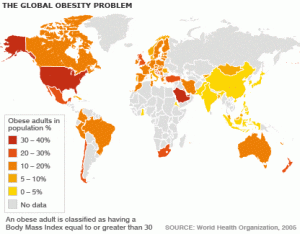 Master Gene Found To Cause Obesity And Diabetes: According to a study led by a team of King’s College London and the University of Oxford researchers, a “master regulator” gene is being named the culprit of high cholesterol levels and type 2 diabetes in the body.
Master Gene Found To Cause Obesity And Diabetes: According to a study led by a team of King’s College London and the University of Oxford researchers, a “master regulator” gene is being named the culprit of high cholesterol levels and type 2 diabetes in the body.
The regulatory gene has become a lead target in helping to fight off metabolic diseases such as diabetes, obesity and even heart disease. Fat alone is the biggest cause of these diseases.
Through years of continuous study, it had already come to light that the KLF14 gene was linked to type 2 diabetes and cholesterol levels. However, researchers did not know about the role that was being played in which could control other genes positioned further away on the genome.
Over 20,000 genes within subcutaneous fat biopsies in 800 UK female twin volunteers were examined. A connection was found between the KLF14 gene and the expression levels of multiple distant genes that were found in fat tissue. This means that the gene acts as a master switch to control these genes. Six hundred subcutaneous fat biopsies were then confirmed in Icelandic subjects.
These other genes that are controlled by the KLF14 gene are found to be linked to certain metabolic traits like cholesterol, insulin, glucose levels, and BMX (body-mass index).
There are a set of genes that are inherited by the mother and the father, but the KLF14 gene is inherited from the mother. In this instance, the father’s side of the KLF14 for lack of a better world “switched off.” This means that the mother’s gene is the one that is ready and active. This is actually referred to as a process known as imprinting. The KLF14’s ability to control other genes is completely dependent on the mother, as the father’s copy showed nothing.
A professor by the name of Tim Spector who led the MuTHER project to find out what the master gene was capable of had this to say. “This is the first major study that shows how small changes in one master regulator gene can cause a cascade of other metabolic effects in other genes. This has great therapeutic potential particularly as by studying large detailed populations such as the twins we hope to find more of these regulators.”
Another professor, Mark McCarthy also commented. “KLF14 seems to act as a master switch controlling processes that connect changes in the behavior of subcutaneous fat to disturbances in muscle and liver that contribute to diabetes and other conditions. We are working hard right now to understand these processes and how we can use this information to improve treatment of these conditions.”